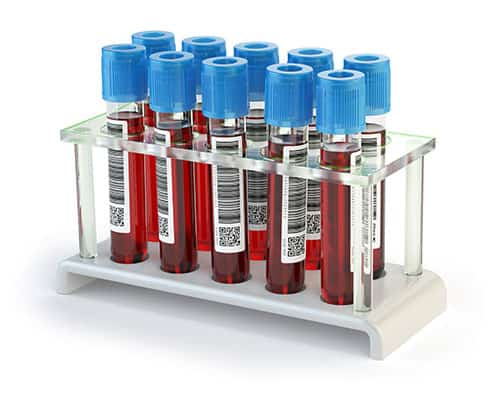Human Diagnostics - eu and uk
Human Diagnostics – EU and UK
Staff at Catachem have been pioneers in the early development of diagnostic reagents for use on automated equipment going back to the 1970’s, and the company continues to develop new reagents for use in the human clinical laboratory.
Catachem’s diagnostic products have been evolving for the nearly 40 years that the company has been in business. Landmark papers by Catachem’s founder Luis P. Leon, on a UV glucose reagent have been cited in the scientific literature 43 times at a recent count. Some newer IVDD testing products in Catachem’s portfolio include plasma free hemoglobin (PFH), ethylene glycol, methanol and glutamate dehydrogenase, all of which can be used on most modern laboratory analyzers.

Specialty testing products for IVDD use in the EU and UK
Plasma Free Hemoglobin (C462-0A)
This test can be run on most clinical chemistry analyzers, unlike those in the past. The test is sensitive and accurate enough to measure hemoglobin at levels approaching 2 mg/dL (1.2 µmol/L) and demonstrates linearity on most analyzers to 100 mg/dL (60 µmol/L).
Ethylene Glycol – Quantitative Test (C504-0A)
Ethylene glycol is a key component in most antifreeze products. The ingestion of ethylene glycol can quickly poison the patient and lead to irreversible liver and kidney damage if not quickly diagnosed and treated. If ethylene glycol is shown to be present in a patient’s blood, treatment is relatively simple.
Catachem has developed an accurate quantitative test (C504-0A) that determines ethylene glycol levels. Values obtained on Catachem’s quantitative test reagent compare closely to values obtained on GC/MS methods (Am.J.Clin.Pathol. 2011, 136:165-6). Catachem’s product has been designed to effectively eliminate interferences from propylene glycol, a secondary component in some antifreeze products that is also used as an additive in some human foodstuffs.
NOTE: The antidote 4-methylpyrazole (fomepizole), shows no interference to a level of 120mg/L. A typical target range for treatment is 8 – 25mg/L.
(Annals of Clinical Biochemistry, Robson et al, 09, 2016)
Methanol – Quantitative Test (C604-0A)
This test is linear to 100 mg/dL (31 mM/L) and shows no interference from ethanol to a concentration of 690 mg/dL (a human being is comatose at 400 mg/dL ethanol). A 29 sample correlation against a GC-FID method gave a Deming Regression equation of y=0.899x – 2.66, r = 0.982.
Ethylene Glycol – FasTox Test Kit (C504-0C)
Mirroring Catachem’s quantitative test formulation, it is not subject to common interferences like propylene glycol. The format of the kit involving the use of both low and high controls during each test run eliminates any need for additional calibration.
Methanol – FasTox Test Kit (C604-0B)
*For research use only
How Can We Help You?
If you are looking to place an order, request technical help or ask questions about us, get in touch today!
